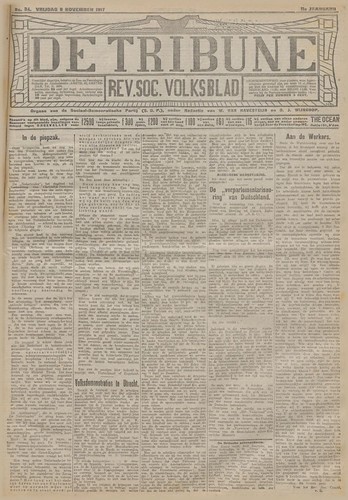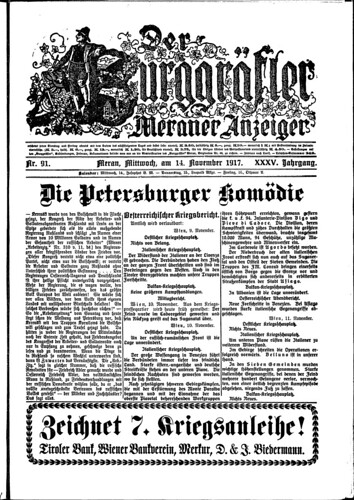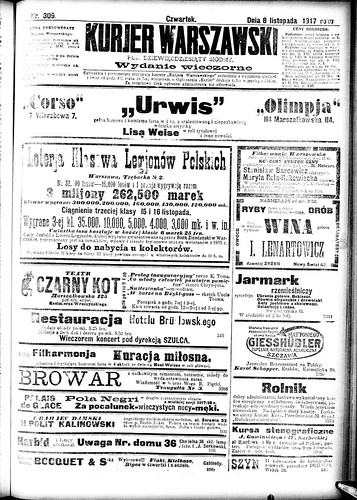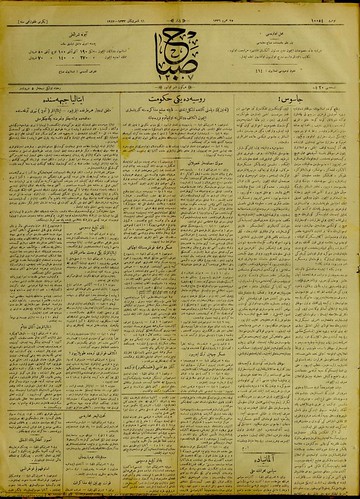This week one hundred years ago, on 28th of June 1914, Archduke Franz Ferdinand of Austria was assassinated. This event triggered the outbreak of WWI one month later. How did European newspapers of the time cover the crucial events and the political opinions in this terrible war? Did the news travel fast? Europeana Newspapers has gathered historic newspaper material to illustrate how different European newspapers reported on WWI. This week we’ll publish a series of three articles, each covering one important moment in WWI. Today in the second article of our series, in which we cover the October Revolution.
1917 was a pivotal and eventful year in Russia’s history. The October Revolution laid the foundation for a new world power to come but it cannot be seen without the preceding February Revolution.
Widespread strikes and demonstrations held during the last week of February (according to the Julian calendar or the second week of March according to the Gregorian calendar) led to the abdication Tsar Nicholas II. Romanov rule commencing with Tsar Michael about three centuries earlier, was brought to an end by the refusal to accept the crown by Michael – the brother of Nicholas II.[1]
The political vacuum left by the abdication of the Tsar was filled by two actors: On the one hand, the liberal Provisional Government first led by Prince George Lvov, then after uprisings in July by Alexander Kerensky. On the other hand the ‘Petrograd Soviet of Workers’ and Soldiers’ Deputies’, the organ of the political left. Although about 700 soviets (i.e. councils) emerged all over the country in March and April, the one in Petrograd, today’s St. Petersburg, was the most powerful.[2]
During 1917 the constellation within the political left changed dramatically. Initially a minority in the Petrograd Soviet[3], the Bolsheviks, led by Vladimir Lenin, gained more and more influence. Finally, in the fall of 1917 Lenin ordered preparations for the seizure of power, though without a definitive date. He argued: “History will not forgive us if we do not assume power now.”[4]
Interestingly it was a newspaper related incident that prompted the October Revolution. A press that printed two Bolshevik newspapers was raided in early morning October 24th (or November 6th according to the Gregorian calendar) by the Provisional Government and as Rex A. Wade summarized: “Unbeknownst to anyone, including the Bolshevik leaders, the October Revolution had begun.”[5]
The following armed coup, prepared by Lev Bronshtein, better known as Trotsky, swiftly brought the Bolsheviks to power, ultimately setting in motion “the most radical revolution the world had yet seen.”[6]


On the 9th of November 1917 the Dutch newspaper Telegraaf opens with the heading Anarchy in Russia – Lenin Rules. The social democrat newspaper De Tribune, very much interested in the situation in Russia, is not so fast. On November 9 it still contains an analysis of the Kerensky government.

On November 9th the Tiroler newspapers Bozner Zeitung opens with big headlines “New coup in Russia. The Minister arrested, Kerensky fled. Petersburg in the power of the Military Revolutionary Committee. Demands immediate cease-fire and peace”. On page 3 of the same newspaper a longer article titled Revolution in Russia is printed. Vienna and St. Petersburg report on the victory of Lenin and his social revolution, his demands for democracy as well as the arrest of the former ministers and the flight of Kerensky.


On Wednseday 14th of November the Brixner Chronik heads „Kerensky again in charge?“. The article relays on reports from Stockholm, according to which it is rumored that Kerensky prevailed in bloody fight over the Bolsheviks – not least thanks to support from England. Kerensky hopes to put down the counter revolution. But the outcome of the Civil War, according to the Brixner Chronik, is still uncertain at this time. On the same day the Der Burggräfler printed a front page story titled “The Russian Comedy”. It tells conflicting news about victory or defeat of the Bolsheviks that are reported from St. Petersburg, which rather confuse than clarifies the situation. The article is written in a judgmental tone and decisions and statements of the Russians are ridiculed.


The first information about the October Revolution in the Polish newspaper Kurjer Warszawski is a telegram that came via Stockholm on November 8th. The Telegram speaks about a civil war in Russia. A day later, November 9th the same newspaper runs an article about „Civil war in Russia”. The article informs about the capture of the Winter Palace, proclamation of the Soviet of Workers’ and Soldiers’ Deputies.


The reflections of the October Revolution reached Ottoman Capital several days later. In the most important newspapers of the period there is no proper information about inland affairs of Russia.On November 11th Sabah newspaper states “New government in Russia, under Lenin’s leadership.” The article reports from St. Petersburg that Lenin will give an ultimatum to the Allied Powers to engage in peace negotiations with his cabinet. The Soviet government is formed, with Lenin as Chairman. Trotsky, originally Jewish, will head the Army. Vakit, another Turkish newspaper, reports on the front page, on the same day: “New era in Russia”. The article talks about the bloody days in St. Petersburg. Where is Kerensky? The collision of two forces: War and Peace. Lenin gives ultimatum. Seizure of the Winter Palace. Revolution committees. Second declaration. The looting of military.
[1] Rex A. Wade, The Russian Revolution, 1917 (Cambridge 2005), p. 52.
[2] Steve A. Smith, Die Russische Revolution (Stuttgart 2011), p. 29.
[3] Robert Service, A history of modern Russia: from Nicholas II to Vladimir Putin (Cambridge 2005), p. 47.
[4] Richard Sakwa (ed.), The Rise and Fall of the Soviet Union 1917-1991 (London 2005), p. 44.
[5] Wade, Russian Revolution, p. 235.
[6] Wade, ibid., p. 1.

This is an old newspaper written in Russian, spelled with the Russian alphabet and it is very awesome. This makes me love it with all my heart.